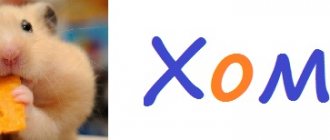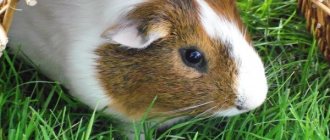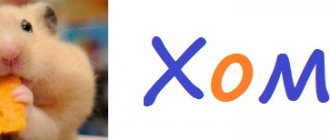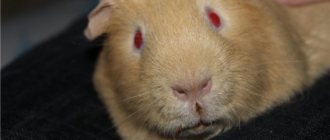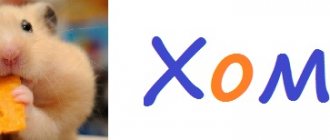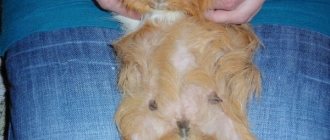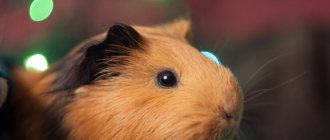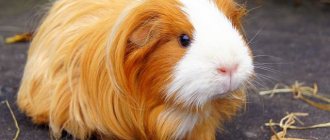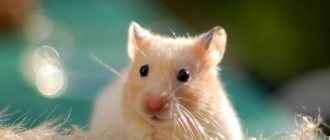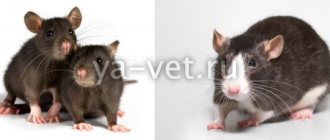Eye diseases appear quite often in guinea pigs. The reason is the lack of protection for the visual organs. They lack nictitating membranes, which makes them open to germs, bacteria, and foreign particles. Many owners, having discovered signs of pathologies, use drugs from their first aid kit in treatment. The consequence of this approach in most cases is deterioration of the condition, decreased visual acuity, blindness, and death is not excluded. It is necessary to know what eye diseases can appear in a guinea pig, the causes of diseases and methods of treating them.
Conjunctivitis
The inflammatory process of the mucous membrane of the eye is called conjunctivitis.
Important! You can independently determine if your rodent has health problems. But to be more reliable, it is better to seek help from a veterinarian.
There are many reasons for the development of this disease:
- eyeball injuries;
- entry of foreign bodies;
- allergic reaction (to dust, smoke, etc.);
- lack of vitamin C in the body;
- infectious pathologies.
Signs of conjunctivitis are as follows:
- the eye begins to water;
- weakness appears;
- eyelids may swell;
- the mucous membrane turns red;
- loss of appetite;
- purulent blisters appear in the eye area.
This disease can be treated in several ways:
- Clean your eyes from discharge three times a day with a gauze swab dipped in boiled water.
- Instill medications with anti-inflammatory properties. The best option is “Tsiprovet” or “Iris”.
- Use special vitamins.
- Rinse your eyes with saline solution.
Try not to use traditional medicine without a doctor's prescription. Veterinarians often prescribe antibiotics and antifungal drugs based on the animal’s well-being.
Did you know? Guinea pigs tend to eat their own droppings. This is because they absorb vitamin K during the second passage of food through the esophagus.
Common guinea pig eye diseases and their treatments
Most often, when kept at home, the following ophthalmological pathologies are observed in guinea pigs.
Conjunctivitis
Conjunctivitis is an inflammatory process of the mucous membrane of the eye. Conjunctivitis in guinea pigs is caused by eye injuries, the ingress of foreign bodies, an allergic reaction to filler, dust or smoke, violation of the animal's living conditions, a lack of vitamin C, and also an accompanying symptom is often an ophthalmological disease, various infectious and non-infectious pathologies.
Conjunctivitis
If your guinea pig:
- eyes are full of tears;
- weakness occurs;
- photophobia;
- swelling of the eyelids;
- severe redness of the mucous membrane of the eye and skin of the eyelids;
- lack of appetite;
- diarrhea;
- eyes rot;
- accumulation of white or yellow pus in the corners of the eyes;
- often the eye closes completely.
You can judge the presence of conjunctivitis or keratoconjunctivitis in a furry animal. If your pet's eyes become infected, you must immediately contact a veterinary clinic; untreated purulent conjunctivitis causes ulceration of the cornea of the eye, loss of vision and often death.
Treatment of conjunctivitis in guinea pigs:
- When cleaning the eye from discharge with a gauze swab moistened with boiled water.
- Rinse with sterile saline solution.
- Apply anti-inflammatory drops “Tsiprovet”, “Tsipromed”, “Iris” or put antibacterial ointments under the eyelid.
- Use of special vitamins.
- The veterinarian will prescribe antibiotics or antifungal medications, depending on the cause.
It is highly not recommended to wash your guinea pig’s eyes with a decoction of chamomile or tea leaves.
Keratitis
Keratitis is an inflammatory disease of the cornea of the eye. Keratitis in guinea pigs develops due to:
- microtrauma of the eye;
- irritation of the cornea with ammonia, dust or smoke;
- lack of vitamins;
- entry of a foreign body;
- bacterial, viral and fungal diseases.
The disease is characterized by:
- strong pain;
- lacrimation;
- photophobia;
- redness of the eyeball;
- the guinea pig squints;
- refuses food;
- becomes inactive.
As the disease progresses and the cornea becomes clouded and ulcerated, the animal may lose vision.
For the treatment of ophthalmological pathology, anti-inflammatory drops “Tsiprovet”, “Tsipromed”, “Iris” and ointments “Actovegin”, “Solcoseryl” are used.
Keratitis
Belmo
A cataract is an ophthalmological disease characterized by persistent clouding of the cornea of the eye. A thorn in the eye of a guinea pig is formed due to eye injuries, untreated conjunctivitis, keratitis, keratoconjunctivitis, and infectious diseases. Clinically, the pathology looks like a completely white eye, with this disease there is partial or complete loss of vision in the pet.
If the eyes of a small animal turn white or become partially whitish, treatment with drops will not bring results; corneal leukorrhea is removed surgically.
Belmo
Cataract
Cataract is partial or complete clouding of the lens of the eye. Cataracts in guinea pigs are characterized by a decrease in the ability of the lens to transmit light, as well as partial or complete loss of vision. A healthy lens is a completely transparent lens, the function of which is to refract light rays and direct them to the retina of the eye. The name of the disease “cataract” means waterfall; a furry pet with this disease sees the world around him as if through streams of water.
The cause of cloudy eyes in a pet can be:
- diabetes;
- lack of vitamins;
- microtrauma of the eye;
- metabolic disease;
- age or congenital malformations.
Clinically, ophthalmological pathology in a guinea pig looks like clouding of the eye.
Cataract
Cataracts are a hereditary disease, so when purchasing a guinea pig, you should ask the breeder whether the animal’s parents had a similar ophthalmological disease. Conscientious breeders do not allow the breeding of individuals with this eye pathology. Treatment of cataracts in guinea pigs is recommended in a veterinary clinic, most often the animal completely loses vision.
Glaucoma
Glaucoma is a chronic ophthalmological disease characterized by the destruction of optic nerve cells against the background of a long-term increase in intraocular pressure. If left untreated, glaucoma in guinea pigs is an irreversible process that results in complete loss of vision.
Clinically, eye pathology manifests itself:
- sharp enlargement and redness of the eyeball;
- lacrimation;
- photophobia;
- lack of pupillary response and severe corneal edema.
Glaucoma
The initial stages of the disease are successfully treated with eye drops and drugs that maintain intraocular pressure; in advanced cases, the eye is removed.
Removing the eyeball
Bulging of the orbit or tear glands (fat eye)
Fat eye is an ophthalmological condition characterized by a protrusion of the orbital or conjunctival sac. The disease cannot be cured, but sometimes laser plastic surgery of the conjunctival sac is used. The disease is hereditary and develops in guinea pigs at the age of 6-8 months.
Swelling of the conjunctival sac
Turn of the century
Entropion is a pathology of the organs of vision, characterized by the curling of the animal's eyelids inward. Due to irritation of the cornea due to constant friction of the eyelashes, persistent clouding of the eyeball occurs. The pathology cannot be treated; to alleviate the condition, specialists secure the animal’s eyelashes to the upper eyelid with a special sticky mass.
At the turn of the century
Bone neoplasm
Sometimes, when there is an excess of vitamin C in the guinea pig’s body or a violation of mineral metabolism, a bone or cartilaginous tumor forms on the outer shell of the animal’s eye.
Clinically, the pathology manifests itself:
- the appearance of a white stripe inside the eye;
- photophobia;
- destruction of the optic nerve and blurred vision.
This pathology cannot be treated.
Bone neoplasms
Retrobulbar abscess
Retrobulbar abscess in guinea pigs is a complication of a dental disease when elongated tooth roots grow into the socket. A sick pet has an increase in the volume of the eyeball with a sharp swelling of the eye from the orbit. X-ray examination is required to confirm the diagnosis; Treatment consists of removing the diseased eye, grinding or removing teeth.
Increasing the volume of the eyeball
Nystagmus is an ophthalmic disease characterized by involuntary twitching of the eye. Pathology is caused by:
- eye injuries;
- entry of foreign bodies;
- conjunctivitis or keratitis;
- inflammation of the inner ear.
In addition to eye twitching, your pet may observe:
- lacrimation;
- redness of the eye socket and eyelids;
- photophobia.
For the treatment of ophthalmopathology, anti-inflammatory drops “Tsiprovet”, “Tsipromed”, “Iris” and ointments “Actovegin”, “Solcoseryl” are prescribed, as well as drugs aimed at destroying the cause of the disease.
White pupil
Sometimes guinea pigs develop white spots in the center of their eyes, similar to a white pupil. In young animals, this condition indicates a lack of calcium and vitamin D in the animal’s body. To treat the pathology, a growing animal is prescribed an aqueous solution of vitamin D - anti-inflammatory eye therapy Aquadetrim. In older people, a white pupil is a manifestation of liver dystrophy and cannot be treated.
If the owner of a guinea pig encounters ophthalmological symptoms in a beloved animal: excessive lacrimation, redness of the eyeball and swelling of the eyelids, purulent discharge, clouding of the cornea, it is recommended to immediately contact a veterinary clinic to save the eyes and save the life of the little pet. Self-medication of eye diseases in guinea pigs with human eye drops is fraught with corneal burns, loss of vision, or deterioration in the health of your beloved animal.
Eye diseases in guinea pigs: conjunctivitis, cataracts, etc. 5 (100%) 1 vote
Fat eye
Very often you can notice that an animal develops an ophthalmological pathology - a fat eye. Symptoms of this disease include protrusion of the eye orbit. It is inherited and appears in young individuals, at the age of 6 months. Today, a medicine has not yet been invented to combat this disease . Therefore, in order to save the guinea pig’s vision, it will be necessary to perform laser plastic surgery of the conjunctival sac.
Video: Guinea pig has a fat eye
Why does a guinea pig's eyes hurt?
Ophthalmic problems in guinea pigs can be caused by a number of reasons:
- eye injuries;
- bacterial, viral and fungal infections;
- congenital anomalies and developmental defects;
- lack of vitamins A and C;
- age;
- intoxication;
- autoimmune diseases;
- oncological diseases;
- non-infectious systemic pathologies;
- radiation exposure;
- metabolic disease.
Sometimes you can see a white discharge from the eyes of a guinea pig, reminiscent of the consistency of milk. This liquid is the secretion of the hardest glands and protects your beloved pet's eyes from drying out. If white discharge is observed in small quantities when washing a furry animal with excellent appetite and activity, the owner of the animal has absolutely nothing to worry about. If your guinea pig's eyes constantly leak copious amounts of whitish fluid, you should urgently contact a specialist to examine the animal. Such a symptom signals internal pathologies that cause severe pain in a small rodent.
Often an active guinea pig will squint in the absence of redness of the eyeball, discharge from the eyes and a good appetite. Sometimes this is how allergies to fillers or prohibited foods occur; When feeding and housing conditions change, the animal very often stops closing its eyes.
If your guinea pig's eyes are watery, it may indicate an eye disease or be a symptom of a serious systemic illness. The rodent body is characterized by increased metabolism, so all pathological processes occur rapidly. For any problems with the eyes, it is recommended to immediately consult a veterinarian; timely administration of effective treatment is very often the key to a favorable outcome of the disease without serious consequences.
Cataract
Guinea pigs often show signs of cataracts—clouding of the eye lens. This disease is characterized by a decrease in the ability to transmit light. This often leads to partial or complete loss of vision.
There are several reasons why this disease develops:
- diabetes;
- slow metabolism;
- lack of vitamins and minerals;
- age.
Cataracts are a genetic disease and can therefore be inherited. The first thing you should do when buying a guinea pig is to check with the breeder whether the animal’s parents suffered from a similar disease. And treatment is best done not at home, but in a veterinary clinic.
Pasteurellosis
The main symptom of this disease is a runny nose.
Primary – the hairs around the nostrils are moisturized.
Secondary – sneezing appears.
The animal sneezes and rubs its nose area with its front paws.
The condition of the respiratory system is severe, with wheezing.
Over time, mucus and pus are released from the nose.
class=”tieicon-boxicon”> The duration of the disease is several months. It may subside for a while and worsen.
A guinea pig in a severe stage of pasteurellosis will have to be euthanized.
There is no specific disease; pasteurellosis is practically incurable.
Glaucoma
The presence of glaucoma in furry guinea pigs leads to the destruction of their optic nerve cells. This is due to prolonged high pressure on the inside of the eye. If treatment is not started on time, the disease begins to progress, leading to complete loss of vision.
Did you know? Baby guinea pigs are born covered in fur and with their eyes open.
Glaucoma is manifested by the following symptoms:
- the eyeball begins to turn red, which can cause blurred vision;
- photophobia develops;
- the cornea swells;
- the pupil does not respond to light and movement.
Treatment consists of using drugs that normalize pressure in the eyeball. “Tsiprovet” is considered an effective medicine. It should be regularly instilled into the affected eye sockets of the pet. The duration of treatment is no more than a week. If you do not see results, you will have to completely remove the eye.
Digestive system
With digestive diseases, there is a clear decrease in appetite and increased thirst.
Before treating constipation, it is necessary to cleanse the gastrointestinal tract - a spoonful of Vaseline or castor oil.
Afterwards, they give one of the drugs to take orally: “Syntomycin”, “Biomycin”, “Phthalazol”, “Enterosperol” or “Levomycetin”.
It is recommended to add strong tea to the animal’s drinking bowl.
If you are absolutely sure that your pet does not have terrible diarrhea due to feeding errors, let him chew on pomegranate peel or galangal root.
Belmo
Ophthalmic pathology is a thorn that often develops after injuries, untimely treatment of conjunctivitis or other infectious diseases. It is not difficult to identify the disease. Carrying out treatment at home will not give any results. It is necessary to completely remove the thorn surgically, which can only be done by an experienced doctor.
If you notice that your pet's eye is completely white, it means that the rodent should be taken to the veterinarian immediately.
White pupil
Some guinea pigs may have a condition called white pupil. It is characterized by white spots in the center of the eye socket. The main reason for the development in young individuals is a lack of vitamin D and calcium. To cure your pet, you will need to add a complex of vitamins to the diet and wash the affected areas with Aquadetrim . If symptoms of the disease begin to appear in older guinea pigs, it means that they are developing liver dystrophy. Unfortunately, in this case it is impossible to cure the animal.
Pseudotuberculosis
Pseudotuberculosis is a chronic disease.
It is characterized by the appearance of nodular formations on the diseased organs and tissues.
An animal is infected through food: pseudotuberculosis is caused by a bacillus called bact. pseudotuberculosis rodentium.
Symptoms:
- decreased appetite;
- exhaustion;
- diarrhea;
- paralysis.
Be sure to hospitalize your mumps. Treatment is strictly inpatient.
Retrobulbar abscess
If your pet has had dental pathologies, then over time he may develop a retrobulbar abscess. The main cause of the disease is tooth roots growing into the eye socket.
Important! In this case, it is impossible to independently determine the diagnosis. An X-ray examination of the guinea pig will be required.
The symptoms are as follows:
- the volume of the eyeball increases;
- the pupil area begins to fester;
- the eye protrudes from the socket.
To cure a retrobulbar abscess, you need to completely remove the diseased eye. In addition, the teeth that caused the development of the disease are ground down and removed.
Can a pig infect its owner with rabies?
Rabies is a disease that affects most animals and people. Thanks to vaccination, it is almost impossible to encounter animals infected with rabies in large cities and surrounding areas. But there is a possibility of infection from wild animals. The virus enters the body through the saliva of a sick animal. That is, for infection it is enough for contaminated saliva to come into contact with mucous membranes or damaged skin surfaces.
Guinea pigs are susceptible to many diseases. To protect your pet from illness, you need to take care of the animal, create the necessary conditions for its life and feed it properly. Regular care will allow you to identify the problem in time and take the necessary measures to cure your pet.
Turn of the century
Very often, guinea pigs develop inward turning of the eyelids. The scientific name of the disease is entropion. The animal's cornea begins to become irritated due to regular rubbing by the eyelashes. The result of this condition is clouding of the eyeball.
Also read about why guinea pig hair falls out.
It is impossible to cure the pathology. The only option is to fix the rodent's eyelashes with a special glue-based mass, which will not allow irritation to progress.
